Equine
Equine Flexural Limb Deformities
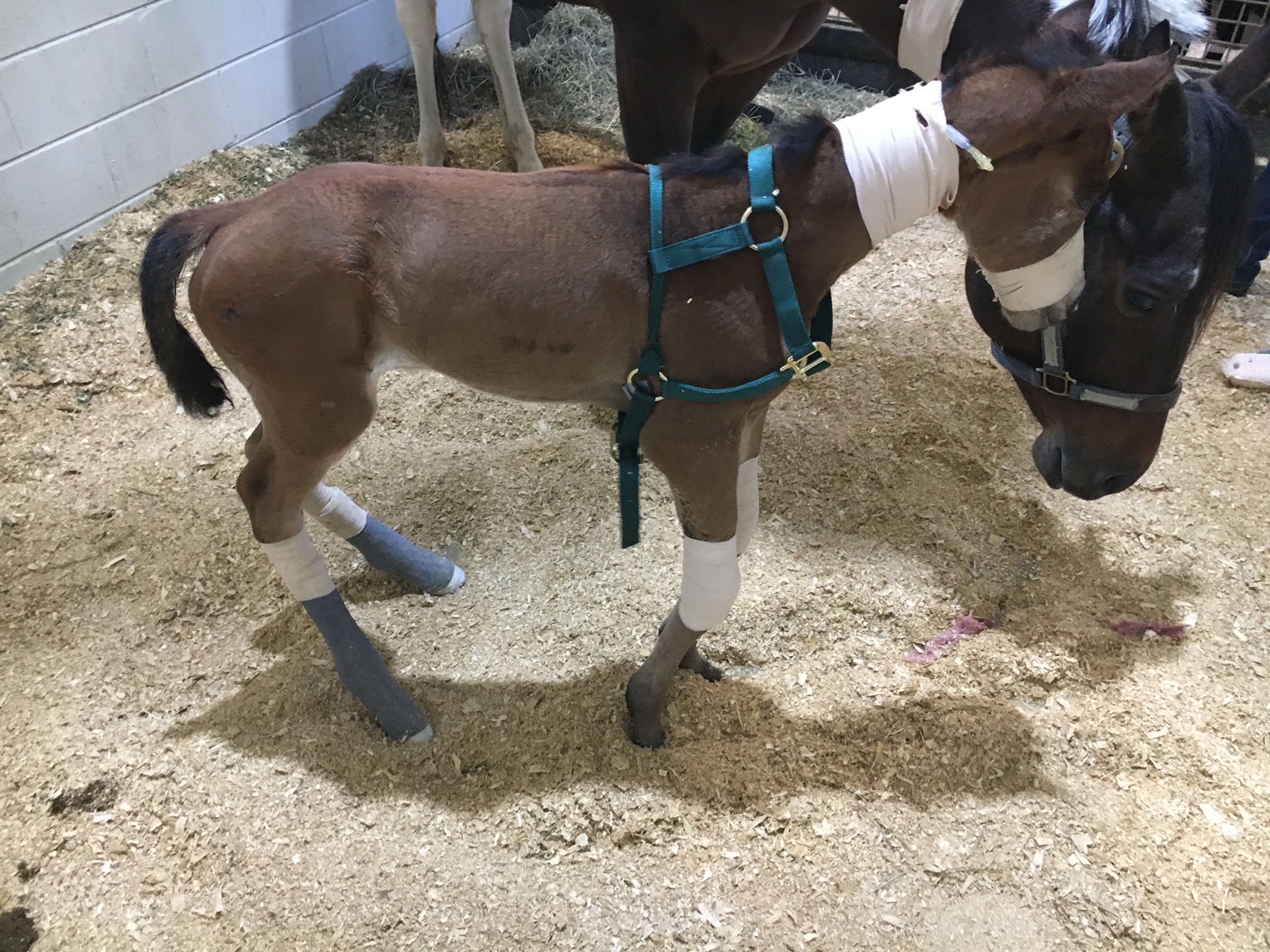
By Dr. Garrett Metcalf
Flexural limb issues can occur in different age groups of horses, starting with newborns up to two- to three-year-olds. These issues occur somewhat predictably in age groups and can be addressed rather quickly when needed. There are various treatments and methods that can be used to address flexural issues. This article will discuss the most common flexural abnormalities and treatment methods.
Foal Flexural Issues
Foal flexural issues are often considered congenital flexural limb abnormalities because they are born with them. We don’t fully understand why this occurs but there is some evidence in the human literature that lack of fetal activity in the womb causes club feet in babies. In foals, it is thought that uterine positioning is to blame for part of the contracted tendons. Other causes can be exposure of the mare to toxic plants or substances that may be toxic to the fetus.
The most common area that a foal will have contracture of limb is at the carpus or knee. These foals will not be able to fully extend the knee and often will affect both at the same time. These foals can have difficulty standing to nurse or will get fatigued quickly and will not be able to stand for longer periods of time. There can also be damage to the extensor tendons or even rupture of extensor tendons caused by the high strain placed on them when the foal tries to stay standing. The rupturing of these tendons is not overly concerning but the lack of extensor function can make the flexural limb deformity worsen.
Other common locations of flexural limb deformities can be at the fetlock or coffin joint level. These deformities are not usually as detrimental to allowing the foal to stand and nurse properly compared to carpal flexural deformities. These deformities can be addressed similar to carpal deformities with some exceptions.
Treatment of Flexural Deformities
Splints or casts can be used to stretch and support the effected limbs of foals. Splints are often preferred by most veterinarians because they can be repositioned or reset as needed. Splints are easier to place on the limbs of foals but they do need resetting every 24 to 48 hours. Casting of the limbs is more rigid but is not adjustable once placed. Casting is often needed in more severe cases and requires changing frequently. Whenever placing these devices, care must be taken to prevent splint or cast sores because foal skin is rather delicate.
Surgical intervention is needed in some cases of carpal flexural deformities. A study out of Australia found that cutting of two muscle/tendon groups on the back of the carpus greatly improved the ability to extend the carpus with splinting methods. Cutting of these tendons do not have consequence to future athletic function. The two muscles are called flexor carpi ulnaris and ulnaris lateralis.
An antibiotic called Oxytetracycline is helpful to treat flexural limb deformities because of its side effect of causing tendon laxity. The laxity is created by chelating calcium within the tendons and allows the relaxation of tendons. This method does have some risk because of the high dose required and renal injury that it can cause when not administered with IV fluids.
Toe extension shoes are used when it comes to dealing with lower limb flexural limb deformities. These shoes are often applied with adhesives and after the splinting or casting is no longer needed. The toe extension shoe allow foal to continue to stretch those tendons every time they take a step and prevent from becoming contracted again.
Older horses (six months or older) with contracted tendons often get acquired limb deformities and the horses need surgical intervention to correct these deformities. These surgeries cut or release check ligaments that allows the musculotendinous unit of the deep digital or superficial digital flexor tendon to elongate. The deep digital flexor tendon is responsible for causing club feet or a flexural limb deformity at the coffin joint. The superficial digital flexor tendon is responsible flexor tendon that causes a flexural limb deformity at the fetlock joint. The check ligaments attach the tendon to bone and do not allow the tendon to elongate past a certain point. By eliminating these ligaments the flexural limb deformity can be corrected by allowing the muscle to stretch since the tendon is much more rigid.
Flexural limb deformities can be caused by excessive laxity or weakness of the tendons. These deformities are often seen in premature foals or foals that are born at a much smaller birth weight. The excessive laxity will cause the toes of there feet to flip up in the air and the fetlocks to be touching the ground. The areas where the skin is contacting the ground will cause sores and abrasions. If these areas are note protected the wounds can get into deep structures causing serious infection and injury the flexor tendons.
Treatment for tendon laxity is to add heel extension shoes to keep the toes flat to the ground. The extension behind the foot forces the toe down under the foals own weight. As the foal becomes stronger from normal activity the muscle attached to the tendons can support the foal and the limb laxity will correct itself. Abrasions still can occur even with heel extension shoes are in place so bandages need to be applied to protect these areas.
Flexural limb issues are a common issue that horses and owners will face. It is best to have your horse evaluated by a veterinarian whenever these problems are suspected. Foal flexural limb deformities can be life threatening because of the limitation of standing on time to nurse colostrum. Without colostrum within the first hours of life the foal is a much higher risk of sepsis and death.
Read more in the August 2023 issue of Oklahoma Farm & Ranch.
Equine
Equine Metabolic Syndrome (EMS) – The Easy Keeper Disease
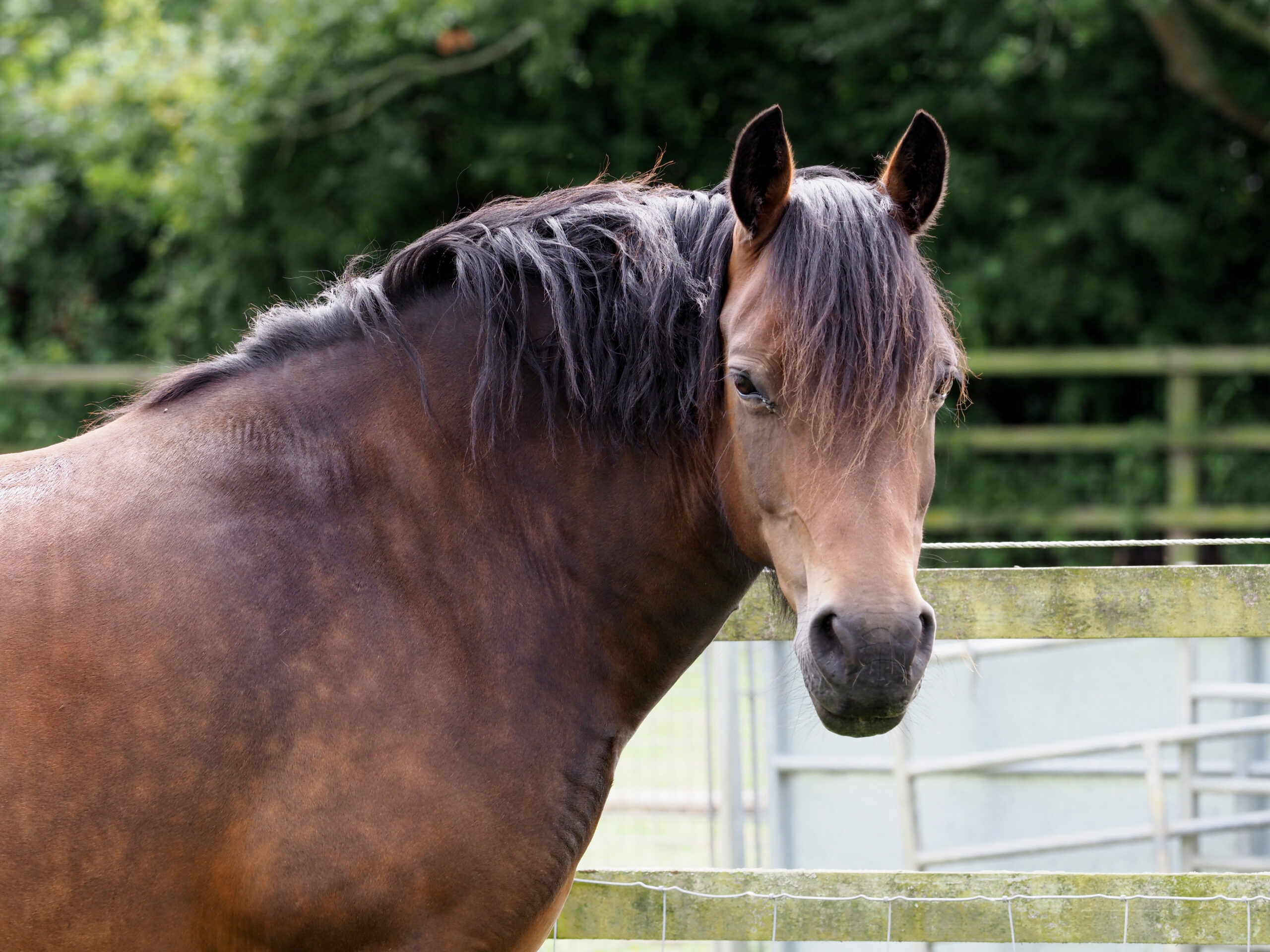
By Garrett Metcalf
It is that time of year when cases in veterinary practices that are diagnosed with EMS or Equine Metabolic Syndrome spike. The reason cases of EMS spike are because the fast growth that pastures experience in the spring. Before EMS was well understood or discovered, many of these horses were diagnosed with grass founder, but through research the process of the disease is now better understood. The disease is caused by obese overfed horses and breeds of horses that have “hardy genes.” These are breeds that generally need less caloric intake to meet their daily energy needs. Although some breeds are at higher risk such as ponies, just about any breed can develop EMS.
Risk Factors for EMS
The key risk factor for development of EMS is weight gain, breed, high caloric intake and very little or inconsistent exercise. Horses that gain weight easily on pasture turn out or are getting too many calories from grains plus hay can be put at risk of EMS. Increasing levels of obesity in horses causes insulin resistance just like in humans, but fortunately for the horse, they have a very robust pancreas that is able to keep up with the extra demand for insulin to provide adequate amounts of glucose to tissue and organ systems despite the insulin resistance. This overproduction of insulin in order to keep up with the resistance causes a very key clinical sign of laminitis, which can be the most debilitating and difficult consequence of EMS. Over 90% of horses will present for laminitis as the first clinical sign of EMS. Unfortunately, the clinical signs for laminitis can go undetected for many months or even years in some cases until the progression of the laminitis reaches a very severe tipping point. It is not uncommon that horses with this disease go undetected for variable periods of time and have x-rays to prove it. Many times, horses will have rotation of the coffin bone in the hoof capsule upwards of 10 degrees before the horse is lame enough to alert their owners that there is a serious problem. It doesn’t seem possible that a horse can get that bad overnight, but rather in many cases they have mini laminitic episodes that are almost silent to many owners that lead to this much damage to their feet over time.
Identifying Horses at Risk
A common feature that puts horses at risk that owners can detect and address themselves before a laminitic crisis occurs is adipose deposited in certain areas of the horse’s body called regional adiposity. Regional adiposity describes fat or adipose tissue that is deposited in different regions of horses that owners should watch for if their horse is gaining weight. These common areas are the neck, commonly referred to as cresty necks, around the tail head, and sheaths of geldings or stallions. If these areas are noticed to be enlarging, especially in the spring when there is an abundance of fresh grass to graze on plus weight gain, then steps need to be taken to prevent the development of EMS.
Managing an Easy Keeper
It is very common to hear owners and veterinarians refer to heavy horses as easy keepers, but there can be some serious consequences of ignoring or brushing it off as just an easy keeper horse. Simple steps can be taken to reverse or reduce the risk of horses developing EMS by decreasing daily caloric intake. First, it is recommended to remove all grain from a horse’s diet including treats. Drastically reducing turn out time to graze especially fast growing lush grass is absolutely necessary in horses at risk of grass founder caused by EMS. There is some conflicting evidence as to when is the best time of day to allow a horse to graze that is sensitive to high sugars in lush growing grass. Some research has found that sugar levels peek later in the afternoon because of an abundance of sunshine and fully ramped up photosynthesis process that occurs in the grass. It is suggested then if grazing is allowed or deemed safe, that morning grazing is a safer time, but sometimes letting an at-risk horse graze is not worth the consequences. Other methods of allowing safe grazing are to mow the grass very short to minimize the volume of grass intake in a given period of time. If mowing is not an option, specially designed grazing muzzles allow pasture turn out but restrict the amount of grass taken in through the muzzle. Do not worry, as many horses are very quick to figure out how to get grass through the small hole in the muzzle and also allow the intake of water. It is recommended to have a leather poll strap on their halters to prevent injury when turned out while wearing a halter. Dry lot management is sometimes the only option, especially in horses that already have EMS. Keeping a horse on dry lot with no access to fresh grass and feeding more mature hay is sometimes needed to manage more severe cases. There are no current medications to help reduced the effects of insulin resistance due to obesity in horses, but some medications can be used to help with weight loss such as Thryo-L (levothyroxine) combined with consistent exercise.
Laminitis
Laminitis is the most debilitating and painful outcome of EMS, not to mention life threating. It is also the most expensive and difficult aspect of managing a horse with EMS. In order to properly manage laminitis caused by EMS, the horse needs to be examined by a veterinarian, radiographs need to be taken of the feet to assess the severity of the laminitis and an experienced farrier needs to be heavily involved with the management of the feet. If the disease is caught early, proper trimming may be all that is needed plus the other management aspects employed, of course, but in many cases corrective therapeutic shoeing is required. Pain management is another key aspect of addressing laminitis. NSAIDs or non-steroidal anti-inflammatory drugs, opioids, aspirin and an anticonvulsant drug called Gabapentin can help block or reduce pain of laminitis that horses experience. Some of these drugs do carry a risk of serious side effects so careful monitoring and proper dosages need to be on the order of a veterinarian to minimize the risk of side effects.
It cannot be repeated enough that the best cure for disease is through prevention. Taking early appropriate steps to keep horses from developing EMS is by far the best way to prevent the disease from occurring. If there is concern your horse is at risk of EMS, please talk to your veterinarian to determine if management and diet changes need to be made to prevent the development of this disease.
Equine
Cudd Quarter Horses Production & Consignment Sale Benefits Rein in Cancer
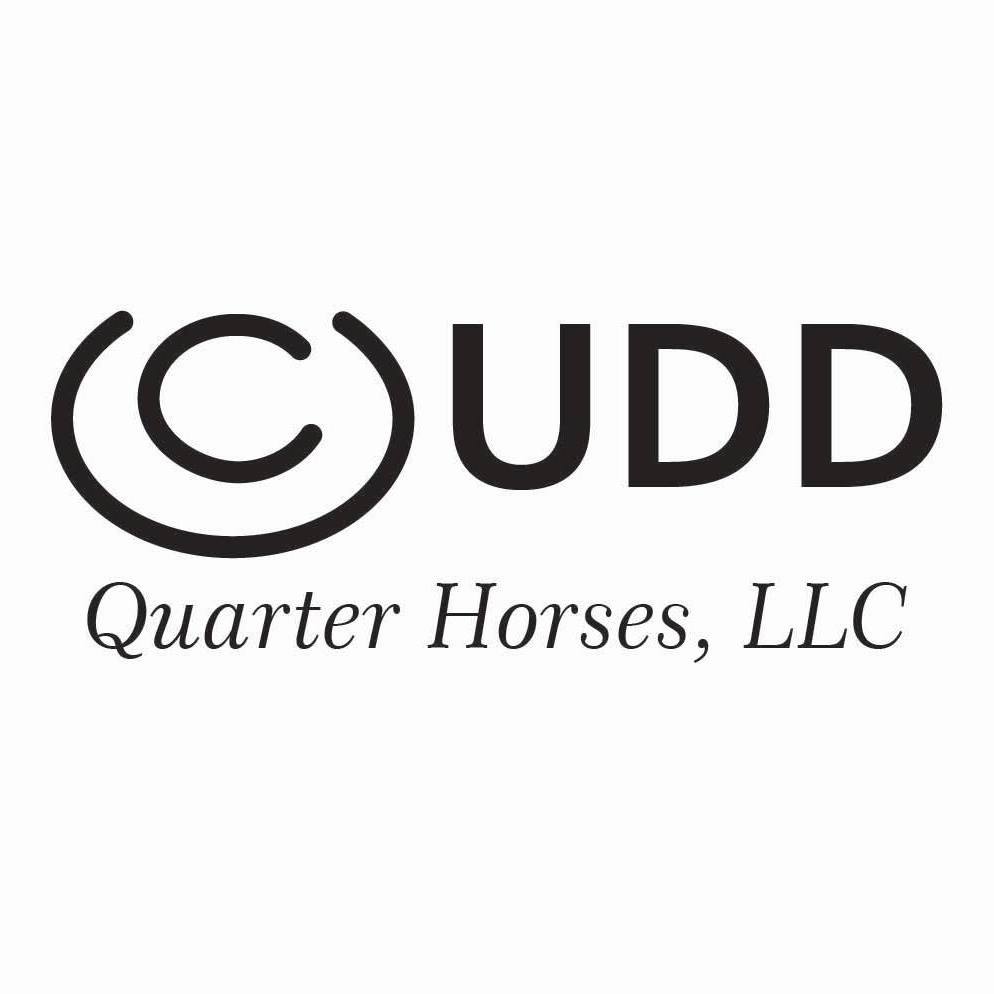
The Cudd Quarter Horses 38th annual sale is set for June 8 at the ranch in Woodward, Okla., and a special horse sold will benefit the Sooner State-based 501(c)(3) Rein in Cancer. Once again, Alice Goldseeker, a sorrel yearling mare by Bay John Goldseeker (King W Goldseeker x Jazzabell Jazz) out of Alices Cat (Cat Ichi x Squirrel Tooth Alice), will sell as lot #24 and, thanks to the generosity of Renee Jane Cudd, the proceed of her sale will go to benefit Rein in Cancer.
Rein in Cancer co-founder Shorty Koger expressed gratitude, saying, “We deeply appreciate Renee Cudd’s support of Rein in Cancer. The funds we provide are crucial for those facing the many challenges of cancer treatment.”
Cheryl Cody, President of Rein in Cancer, emphasized the importance of community support: “Support for Rein in Cancer means so much. The funds are allocated in two key ways: first, to sustain the Shirley Bowman Nutrition Center, which offers care to cancer patients regardless of their financial situation; and second, to provide direct financial assistance to individuals in the horse industry undergoing cancer treatment. Cancer affects everyone, whether personally or through loved ones, making this cause incredibly important. We are extremely grateful to Renee for her support.”
Cudd Quarter Horses was begun in 1985 by Renee Jane Cudd and her late husband, Bobby Joe Cudd. The ranch has been a leading breeder of AQHA Ranch and Roping horses for over 30 years, and the annual Production Sale is always a popular event. Renee noted, “Bobby Joe passed away in 2005, and I feel so lucky that I have been able to continue with it.”
For information on the sale, visit the Cudd Quarter Horses Facebook page.
Rein in Cancer was founded in 2007 by three friends: Shorty Koger of Shorty’s Caboy Hattery, Cheryl Cody of Pro Management, Inc., and healthcare professional Tracie Clark. These founders continue to lead the 501(c)(3) organization, which has raised millions of dollars. Rein in Cancer funds and supports the nutrition clinic at the University of Oklahoma’s Charles and Peggy Stephenson Cancer Center, offering services to all patients regardless of their ability to pay. Additionally, the organization provides direct financial assistance to individuals in the Western performance industry undergoing cancer treatments.
For information on Rein in Cancer, visit ReinInCancer.com.
Equine
Equine Foot Abcesses
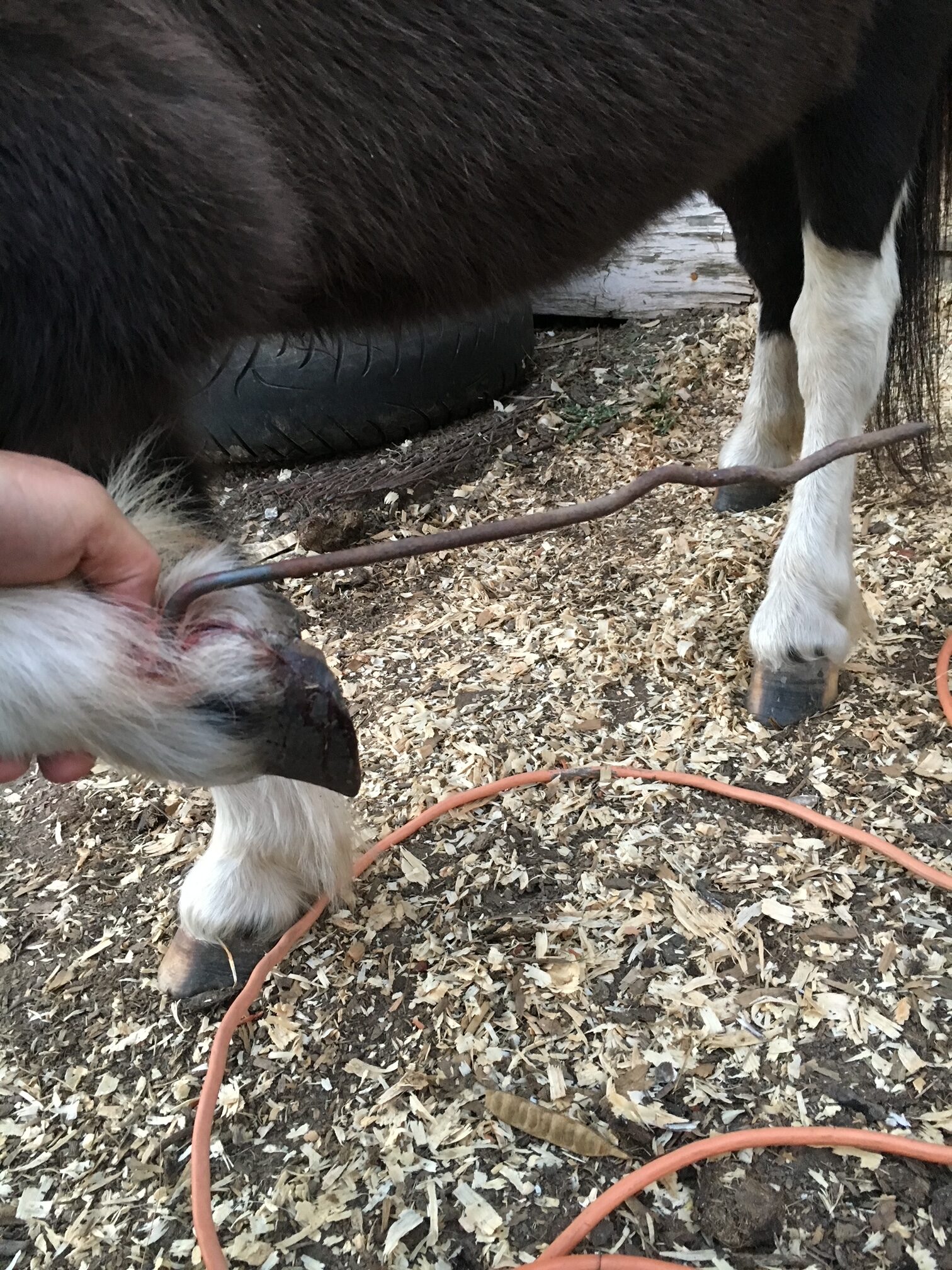
What a pain!
By Dr. Garrett Metcalf, DVM
A foot abscess is a common occurrence in horses throughout the year. Often wet weather can play a factor in the increase number of foot abscesses that horses will experience. A foot abscess can cause a great deal of pain, lameness, swelling and misery to the horse that often needs to be addressed quickly and provide pain management to keep them comfortable. There are many methods of addressing a foot abscess that people use. This article will discuss techniques to evaluate and treat the abscess as quickly as possible.
Foot abscess is a focal or sometimes diffuse infection that is trapped between the sensitive and non-sensitive lamina of the foot capsule. A foot abscess can form randomly from the normal stresses and environmental changes that cause the foot to allow bacteria to enter down to the sensitive tissues. Other causes are penetrating injuries to the bottom of the foot that allows bacteria to enter the through the outer lamina, such as nails, sharp rocks or even thorns. Poor foot care and misplaced shoeing nails can also lead to foot abscesses. A common area for abscesses to form is at the white line (area where the sole and hoof wall meet) and at the bars of the heels.
Foot abscess can cause a horse to have variable amounts of lameness, but generally they will be lame at a walk or even be non-weight bearing from the severity of the pain. Swelling starting at the foot and working its way up the limb can be noted when the abscess is trying to migrate out at the coronary band. These types of abscess are often referred to as “gravel” abscesses. “Gravel” is no more than just a regular foot abscess that has found the path of least resistance to the coronary band, where it ruptures out and causes a draining tract. An abscess in the hind foot can make the horse move rather abnormal to the point that it makes owners and veterinaries perceive the horse as acting neurologic.
Examination of the horse for lameness is the first step in diagnosing a foot abscess. The horse will often be lame at walk but some need to be watched at a trot to determine the lame limb. Lameness localization with regional nerve blocks can help make sure the pain is coming from the foot and not other parts of the limb. The foot will often have an increase digital pulse with occasional notable heat in the foot. The pulse is from inflammation causing a bounding of the digital arteries most notably behind the ankle region. The foot examination often needs to be performed with the shoe removed from the foot if the horse is shod. Hoof testers help pinpoint the area of most concern on the foot and often horses will be rather painful in response to the pressure created by the hoof testers. Knifing the foot out to clean up and remove any old sole or frog material is imperative to be able to locate the abscess with as much accuracy as possible. Often there will be a defect in the hoof or a dark focal tract that will lead to the abscess.
Treatment of the foot abscess can be done multiple ways and many people have lots of opinions on this topic. My treatment of choice is to open that abscess as soon as possible to give the horse nearly immediate relief and to quickly resolve the abscess infection. There are many methods to doing this but a good sharp hoof knife or loop knife one of the easiest ways to get the abscess drainage through the bottom of the foot. Whenever drainage of the abscess is achieved at the bottom this can eliminate the formation of a “gravel” and keep it from migrating out at the coronary band. Also drainage at the bottom allows a more effective treatment of the abscess with topically applied poultice agents. After the abscess has been opened to drain, bandaging the foot with a poultice agent is effective at eliminate the abscess and preventing foreign material from packing to the abscess area.
A great method of bandaging the foot is with the use of a large baby diaper. The diaper is very absorbent and foots the foot rather well. The diaper can be covered with layers of Vetrap, Duck Tape and Elaskiton to keep it protected or the foot can be placed in a medicine boot to keep the diaper protected.
Poultice choices are rather personal experience or availability, but also depend on the nature of the abscess. Epsom salt based foot poultice agent called Magna Paste or similar products are rather good at drawing out the remaining part of the abscess once it is opened. A homemade poultice of sugar combined with Betadine solution can make a really good poultice. There are various other topical agents that can be used effectively. The main thing when choosing a topical product is to make sure it is safe and that it has some antimicrobial properties.
Some foot abscess cases can be difficult to pinpoint and to drain. In these situations often time, pain management and soaking of the foot in Epsom salt water baths can help to allow the abscess rupture or make it easier to identify. In rather difficult abscess or when abscesses keep reoccurring in the same location, X-ray imaging of the foot is helpful to examine the structures of the foot. The abscess itself cannot be seen often with X-ray because the abscess fluid is the same density as the hoof wall. The only way to identify an abscess on X-ray is if there is gas present in the abscess making it visible on the film. Whenever there is a penetrating injury to the foot, X-ray is a must to make sure that the injury is not going into the deeper structures of the foot like the coffin joint or navicular bursa. These injuries are much more serious and need to be examined as quickly as possible. It is also recommended whenever possible to leave the penetrating object in the foot until the X-ray is taken. This will help the veterinarian understand what structures may have been injured.
Prevention of foot abscess is not always possible but a great start to this is really good hoof care. Routine trimming on a timely schedule is key part of good hoof care. The longer the feet go without a trim can affect the lamina and cause stretching of the white line, opening it up to allow bacteria to enter the foot. The use of special shoeing nails and other methods of good shoeing practices also limit the risk of abscessation.
Read more in the June issue of Oklahoma Farm & Ranch.
-
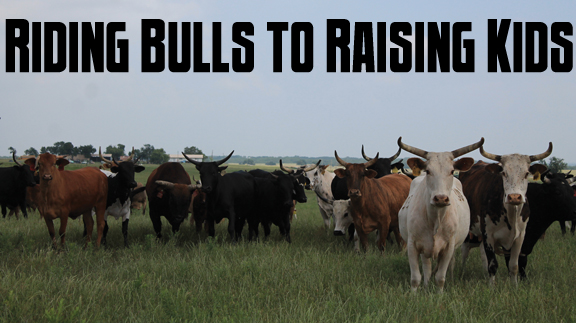
 Country Lifestyle7 years ago
Country Lifestyle7 years agoJuly 2017 Profile: J.W. Hart
-
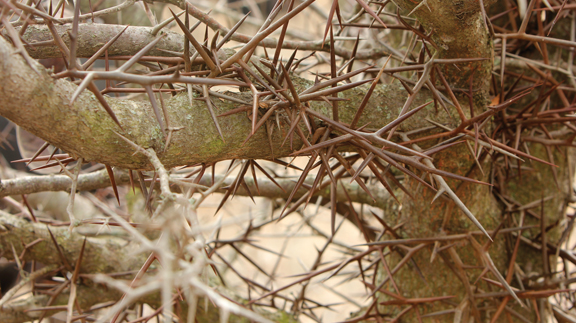
 Outdoors6 years ago
Outdoors6 years agoGrazing Oklahoma: Honey Locust
-
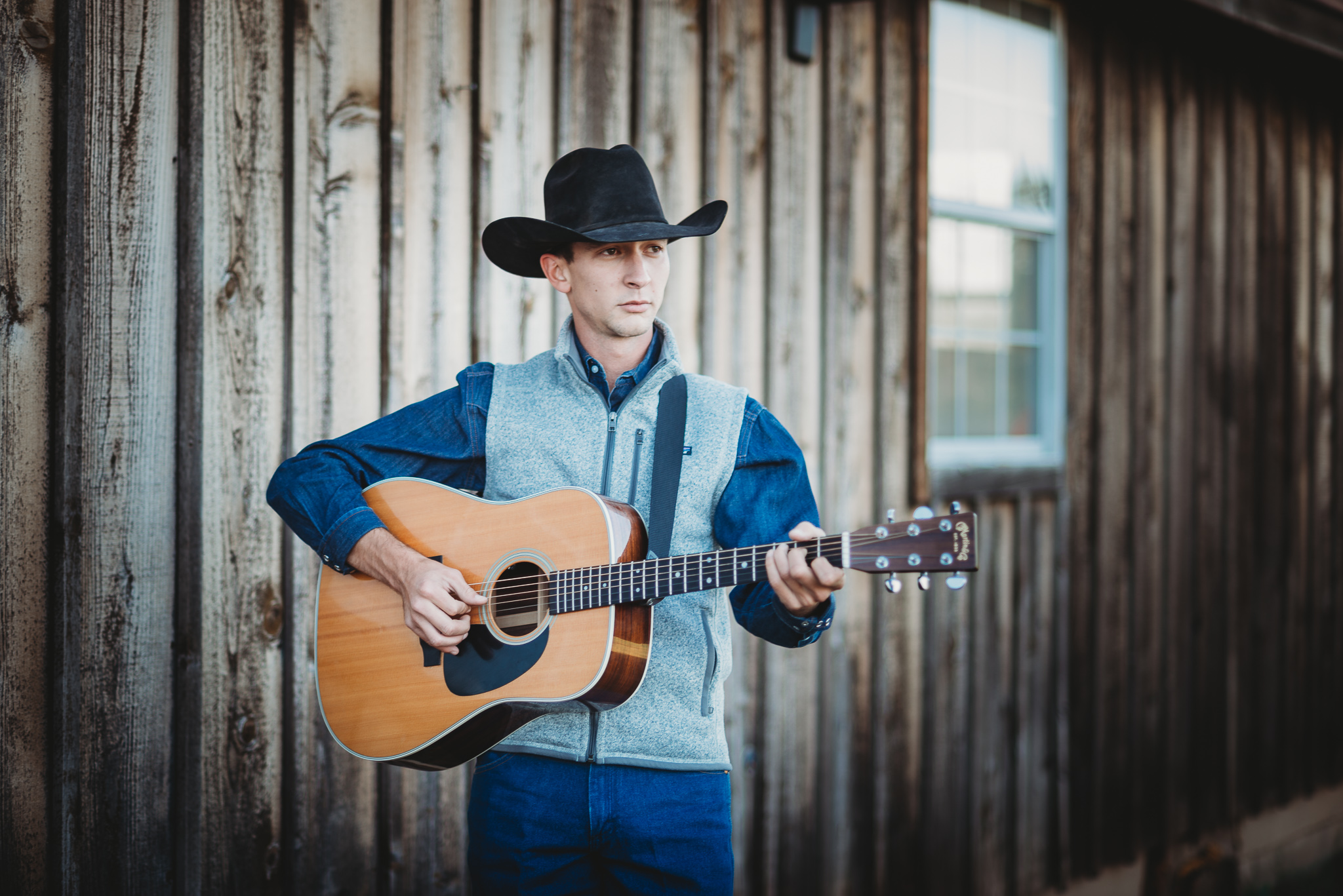
 Country Lifestyle3 years ago
Country Lifestyle3 years agoThe Two Sides of Colten Jesse
-

 Outdoors4 years ago
Outdoors4 years agoPecan Production Information: Online Resources for Growers
-

 Equine7 years ago
Equine7 years agoUmbilical Hernia
-

 Attractions7 years ago
Attractions7 years ago48 Hours in Atoka Remembered
-

 Farm & Ranch6 years ago
Farm & Ranch6 years agoHackberry (Celtis spp.)
-

 Outdoors3 years ago
Outdoors3 years agoSuzy Landess: Conservation carries history into the future





